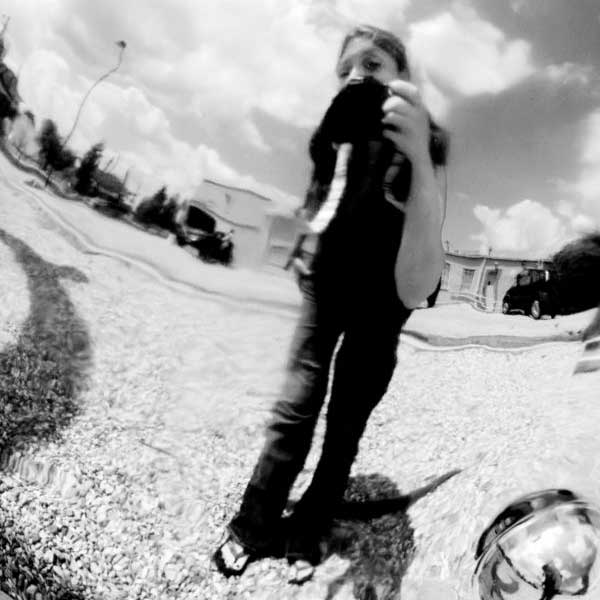Category: Trends
Dude, don’t be lazy. Just bring your camera with you already

Since the iPhone came along as the first phone with a halfway decent camera, people have become addicted to the taking and sharing of camera phone pics, some more than others. With a million photo apps to enhance your otherwise crappy smart phone photos and more apps (like instagram) to share said otherwise crappy phone photos, “phoneography” has kind of reared its head into a category of its own.
With these new found phoneographer enthusiasts (and boy, is there enthusiasm) comes the regular gamut of cases, filters, lenses, and other attachments to make your camera phone pics look better (or at least look more hipster).
Now, most of these gizmos are small enough to stow in a backpack, purse, or maybe even a pocket. Makes sense, if that’s your schtick and all. Especially if you have a keen eye, an iPhone, and a budget lacking the wiggle room to buy a digital SLR and good lenses and all that junk.
I will say, though, that things are starting to get a little out of hand. Last summer, the blogosphere was all in a tizzy of clever witticisms when this little contraption was released:
For $250, you can attach your GIANT lens to your tiny phone in order to take manually focused photos without the luxury of adjusting your f/stop (unless your lens is so old school it has an f/stop ring on it), that come out upside down so you have to download an app to turn them around. It’s like learning French there are so many exceptions.
What’s the newest addition in iphoneography ridiculousness?
It’s the world’s most elaborate phone case ever. It looks like an old rangefinder, has a little working shutter like an old rangefinder, but it takes your photos and your phone calls. And what happens anyway when the damn thing rings? I take it you just answer the camera. Cute? Sure, but it almost seems like iphoneographers out there are just pining for the real deal.
A shift in focus

It’s happened to all of us: we grab an AWESOME shot, but upon further examination realize that a key element of said AWESOME photo is soft. Grrrr.
A company out of Silicon Valley is coming out with a new product later this year that takes focus out of the imaging equation. Yes, you read that correctly – no more out of focus images. Lytro’s camera let’s you select your focus point after the image is taken. The camera does this by capturing more light, and light from different angles, than your regular camera with a sensor called the microlens array. It basically fits a bunch of lenses into a neat and tiny package – a small point-and-shoot package to be exact. You can then go in after the fact to select your focus point in what Lytro calls a “living image.”
This new toy is garnering a lot of buzz from techno geeks and photographers alike, but a $50 million investment in the company begs the question: will it take off? In a nutshell, I say yes. Along with the obvious biggie of no out of focus shots, the camera brings some advantages to the table. To start, the time taken to focus an image is completely cut out of the process. This means no more waiting with a strained smile while the person taking the photo waits for the camera to do its thing. This combined with a lack of shutter lag makes the photo-taking experience particularly snappy.
Lytro is also working on the technology so the camera will be able to take images that are completely in focus (think Ansel Adams’ landscapes). But what about quality? Lytro has not yet made an official statement as to resolution, however, one of the prototype testers noted that there was no discrepancy between the resolution of the Lytro camera and his regular point-and-shoots. In addition to the technology, Lytro is in the process of making the images available to the usual suspects, namely Facebook and the iPad. To top it all off, Lytro images can be viewed in 3D, with the dorky glasses of course.
Another big looming question pertains to cost. Lytro has stated that the cameras will be available for the consumer market, meaning probably the lower end of hundreds of dollars. The release is expected late this year. Clearly the announcement of this new technology inspires more questions than it answers. Will I still be able to edit them in Photoshop? Will they even be jpgs? What about zoom? The FAQ page on Lytro’s blog answers some questions. Interested parties can keep tabs by reading the blog or signing up for the email list.
The video below explains a little more. For a fully interactive experience, check out their picture gallery.
Motion Pictures

A big trend in photography this year has been moving photographs. Wait, isn’t a moving photograph just a video? Technically yes, however, photographer Jamie Beck and motion designer Kevin Burg teamed up to create a new little technique that combines stills and motion into one neat little package. I first came across the moving photograph on Gilt Taste (click on the categories) and naturally had a double take. Did that cheese wrapper really just flutter? The basic idea is to take a still photograph and have a small part of the image move in a subtle way. If I was in advertising, I’d be jumping at the opportunity to put this new technique to work before everybody’s doing it.
So, Shoot From the Hipster, how exactly does it work?
Patience, grasshopper. I am here to tell you.
The secret is in the GIF. A GIF is a file format that supports animation (think of all those online ads that flip). The “cinemagraphs” just involve a lot more frames to make the transition smooth and subtle. Think in layers. A still photograph is the top layer, with key areas cut out so the video underneath peeks through. It’s almost so simple that tons of graphics folks out there are having one of those little “doh!” moments and asking themselves: Why didn’t I think of that? The answer to that question is that video people think in motion, photographers think in stills. Score one for teamwork.
The best part about the cinemagraph is that anyone with Photoshop and a camera that takes video can do it. Photojojo has a great step-by-step guide on making your own.
So are cinemagraphs just a passing fad or here to stay? As always, it’s hard to tell. This is an advertising gold mine at the moment (think of the prospect of getting an audience to double take your ad), but overuse will ultimately result in everyone ignoring the ads, subtle motion or not, like they do today. If it remains cost-effective, they will stick around regardless. Personally, I’m waiting for the first art show of shifting photographs, or a room full of images playing dodge ball with each other.




